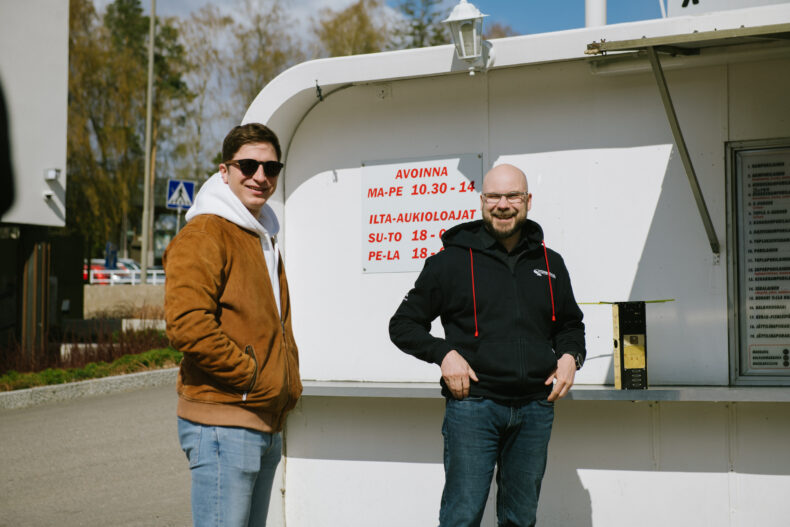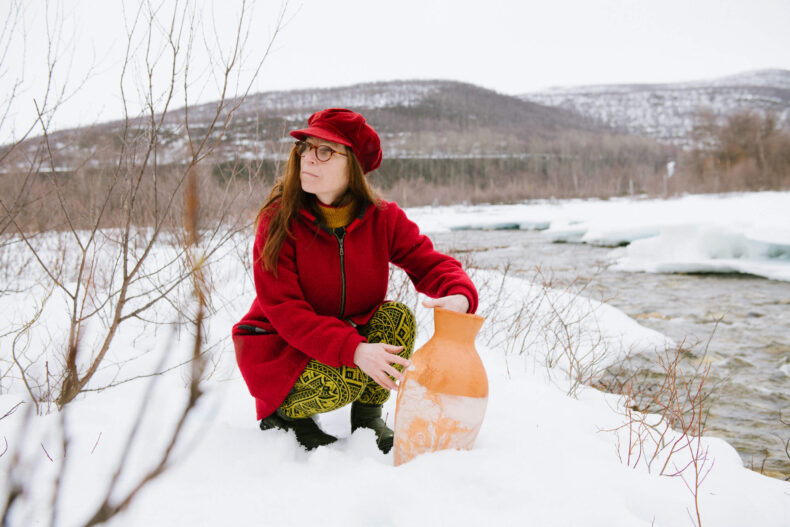What can we learn from real-lifes stories of creative work?
In this sub-chapter, we introduce a few research projects at Aalto University that illustrate some of the methods and mindsets we’ve discussed so far — the tools that can help reach radically creative outcomes. New ideas and creativity are at the core of universities, and research is fundamentally a creative endeavour. Given the importance of creativity throughout society, it’s worth considering what we can learn from university practices.
Some of the projects in this sub-chapter are still underway, while others have already produced results with varying levels and types of creativity. But all of them aim high, and to reach those goals they bring together personal and organizational elements that enable radical creativity.
Creative individuals are often intrinsically rather than extrinsically motivated, meaning that they are motivated by the work itself rather than a potential reward2. They are also likely to show perseverance in their work, pushing on with a creative endeavor in the face of challenges or obstacles1.
An organizational factor known to enable radical creativity is multidisciplinarity1. Like many universities, Aalto is working hard to create multidisciplinary settings: projects, meetings, or spaces that encourage people from different domains to meet and interact. Major creative outcomes almost always come from working in a team that spans disciplines or brings together knowledge from very different organizations1.
Quiz
Well done! You have successfully completed this assignment.
Students built Finland’s first satellite

In 2010, during a course on space technology taught by Jaan Praks, a group of students wanted to develop the Finland’s first satellite. Praks decided to help them. ‘It was a case of radical creativity in that we went all-out on a project with no guarantee of an outcome,’ says Praks, who is now an assistant professor.
Outsiders didn’t seem to believe the students’ project would succeed. ‘They just smiled politely at us and our enthusiasm. I must admit I was scared at times. After all, I was risking my own career in the process,’ Praks says today with a laugh.
Their work eventually resulted in a start-up, ICEYE, that is now a pioneer in Synthetic Aperture Radar (SAR) technology for microsatellites. Rafal Modrzewski, currently the CEO of ICEYE, was one of the first students in the space technology course by Praks.
This project is an example of the risk-taking1 involved in creativity and radical creativity, and it’s also an excellent example of the benefits of low hierarchy1. Instead of just being guided through pre-determined projects, the students were given the opportunity to initiate and lead a project they were passionate about, despite the risks of failure.
Also read about the early days of ICEYE in this article from 2015.
Reflection
Well done! You have successfully completed this assignment.
Radical ceramics
Can ceramics offer a sustainable alternative to concrete?

Concrete is one of the biggest causes of pollution in the world. The Radical Ceramics Research Group, established at Aalto University in 2022, is trying to find new materials to replace the traditional cement used in concrete. The group is trying to find less energy-intensive and more locally sourced alternatives to cement. They’re focusing on using natural materials like clay as geopolymers and alkali-activated materials, which can be a greener alternative to limestone-based types of cement. These geopolymers not only require less heat to produce but can also be made from local materials, reducing transportation emissions.
Their research has shown promising results. They’ve used materials like raw Finnish clay and even recycled porcelain to create geopolymers that produce strong concrete without needing high temperatures. This approach also opens possibilities for reusing waste materials, further reducing environmental impact. The group’s vision is a future where materials excavated at construction sites, like clay, are treated on-site and used in buildings, dramatically reducing waste and energy use.
‘I conceive of myself very much as the kind of craftsperson who believes that, because of the state of the planet, we should go back and look at the traditions and materials we used to use, which are much more sustainable’, says Maarit Mäkelä, the professor of design in the group. She has spent time in Nuorgam village in North Finland, next to the Teno River, where around half of inhabitants are Sami. She has familiarized herself with local craft traditions, and also studied the use of local clay.
This initiative is a good example of multidisciplinarity at its best. It was born from a combination of ceramics, which is usually associated with small decorative items, with the large-scale industrial processes of construction and engineering.
Also read the article Cutting the carbon out of concrete.
Case study
Well done! You have successfully completed this assignment.
Tweaking the brain
The next discovery takes us further inward, with techniques to study and take care of the human brain.
In the photo below, Professor Risto Ilmoniemi, Research Fellow Victor Souza and Doctoral Researcher Ana Maria Soto de la Cruz showcase their new transcranial magnetic stimulation (TMS) device. Ilmoniemi is a physicist and one of the worlds leading experts on TMS, which is used to treat depression and other brain related medial issues. The technology shows promise, but it’s still in the early stage of development.

Ilmoniemi and his team are working on advanced devices that can stimulate different parts of the brain simultaneously or in rapid sequence. These devices use smart algorithms that adapt to the brain’s activity in real time. This technology could make TMS treatments more efficient and effective, and perhaps useful for a variety of conditions. The use of algorithms also makes the devices easier to operate, so the treatments could be available more widely and affordably.
Ilmoniemi dreams that one day TMS could be used worldwide and even in people’s homes.
This work is the culmination of decades of experiments. Its roots go back to cold temperature physics research at Aalto. Ilmoniemi and some of the other physicists saw the potential application in other fields, but it took perseverance to realize those possibilities.
There were obstacles along the way, but there were also moments of insight and creativity. ‘Creative moments are very rare,’ says Ilmoniemi. ‘But they are absolutely necessary, if significant progress is sought for. It is in a way something that is prepared for, all the time, by thinking, by discussing, by reading, and sometimes by presenting crazy ideas.’
This project demonstrates the need for perseverance and the value of multidisciplinarity, bringing together a team of people with backgrounds in physics, medicine and engineering to create something new. But the most intriguing element of creativity here may be what Ilmoniemi said: creativity cannot be forced, but at the same time it is essential for success. Creative processes should be trusted even without knowing whether or when a breakthrough might happen.
Also read this Risto Ilmoniemi interview.
Radical Creatives movie
Meeting change-makers from diverse backgrounds
At Radical Creativity, Aalto, we created a film featuring people for whom creativity—and radical creativity—are essential. Some of them work at Aalto, while others come from elsewhere. You’ve already seen clips of the film in the introductory chapters of this course.
Above is the trailer, but we invite you to watch the full 1-hour film if you’re interested.
Password: Creatives!
Enjoy the film!
Real-life activity
Multidisciplinary thinking
Well done! You have successfully completed this assignment.
Keywords
Breakthrough, outcome, novelty, paradigm-change, radical creativity, intrinsic motivation, extrinsic motivation, perseverance, multidisciplinary, creative process, risk taking, low hierarchy.
References
- Eloranta, V., Hakanen, E., Shaw, C. (2024). Teaching for paradigm shifts: Supporting the drivers of radical creativity in management education. Educational Research Review 45, 100641.
- Gilson, L. L., & Madjar, N. (2011). Radical and incremental creativity: Antecedents and processes. Psychology of Aesthetics, Creativity, and the Arts, 5(1), 21–28.
1. Introduction
In this chapter, we will explore the importance, definitions and different perspectives of radical creativity.
1.1 Creativity and radical creativity
You’ll learn what radical creativity means and how it creates change.
1.2 Culture for radical creativity
You’ll explore the elements of a culture of radical creativity, from the individual to the organization.
1.3 Aspects of radical creativity
You’ll learn about different ways to be creative, and how creative people experience radical creativity in real life at a university.
1.4 Stories of pursuing radical creativity
You’ll get a view of some Aalto University endeavors, where radical creativity is sought for.
1.5 Value of radical creativity
You’ll get a broader perspective on the economic value of radical creativity and why it pays off to develop a radically creative mindset.
